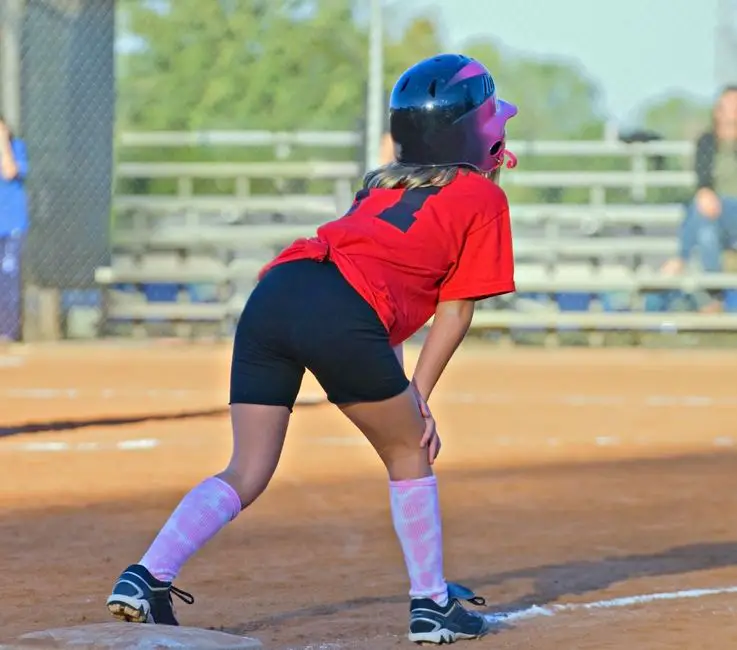
There’s a fly ball to the outfield with a runner on third base with less than 2 out. What do you as the coach do to help her with tagging up on three to score? There are 2 ways to approach this situation. The coach can tell the player when to go and the other way is that the player watches the ball and makes the decision on her own. Here’s what I have done with young players as they learn the timing. Have the runner get on the base in a track or rolling start position facing home plate. Ready to go on my mark. I watch the ball for them and if it is caught i am saying “ready…. set…. NOW!” If it is dropped I simply say “now” when it hits the ground. A note to keep in mind…. Never use the words GO and NO when coaching on the bases. They sound very similar and a miss communication is more likely. Yes it has happened to me at third base where a runner was thrown out because when I said NO she heard GO.
Tagging up on Three to Score in Softball
Here’s my rationale. It’s true that many coaches will say that the runner needs to watch the ball being caught and know when to take off for the next base. True. At most bases they have a clear view of the ball and can make that decision easily and take the appropriate lead to take advantage if the ball drops. At third base on a fly ball to left field however, its not as easy because the runner needs to turn their shoulders to see the ball. By being their eyes for them, the runner only has to focus on 2 things. Your voice and home plate. We all know that the fastest way to get anywhere is via a straight line. Which is definitely the case at third base. If it is left to the runner to decide, they have to watch the ball, decide if they can make the run to home when it is caught, then when it is caught they then need to get into position to run to home as fast as they can. By the coach being the eyes for the runner, they are ready to score when the sign is given.
This tactic takes the guessing out of the play, minimizes the potential for a “lead off” being called because the runner did not tag up, and improves the team’s ability to score. Think about the logistics of the play. If the ball is dropped then the runner scores anyway, and by you being their eyes, there potential to advance is much greater. I saw this exact play in a national playoff game. The runner missed out on scoring because she had to go back to 3rd base to tag up after the fielder caught the ball.
There is no need to take a lead at 3rd base because if the fielder drops the ball, she should score anyway and if she catches the ball then by leading off first she would have to take the time to go back and tag up which means it may not be as easy to score. Practice this play. Have runners at third base and have a coach hit or throw a fly ball. Then have the runner get back to third base and get ready to take off while the coach watches the ball to see if it is fielded or not. By practicing this play, there will be no confusion during a game.
Prior to the game or during games the coach and team should watch the outfielders to see how quick their transition and throw is to the plate to know how much time there is to take advantage of the proximity to the plate.. This will help to make the next move based on knowledge of the opponents skills.
Which Strategy is Better
The tactic you use is going to depend on your coaching philosophy. As the athletes get more experienced, you may have them be the ones to determine when to go and when not to go. Sound is faster than sight to the brain however the effectiveness will depend on the ability of the player to quickly determine the facts to make the appropriate decision. Have them make note of the opponents skills on getting the ball in from the outfield. By having them learn how to judge the defense and go on instinct then the time delay from your voice to their action will disappear.
Give it a try and see how it goes. You will find the one that works best for your athletes.

